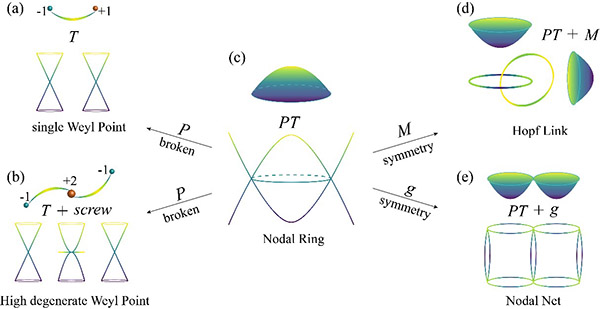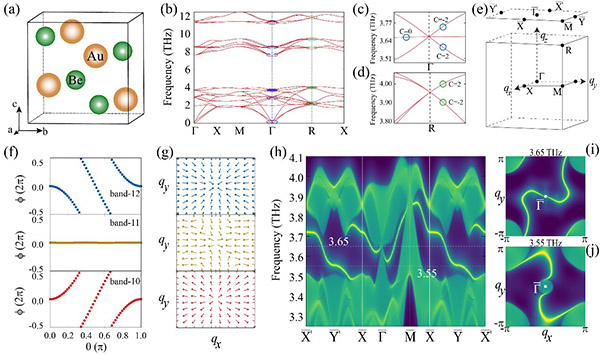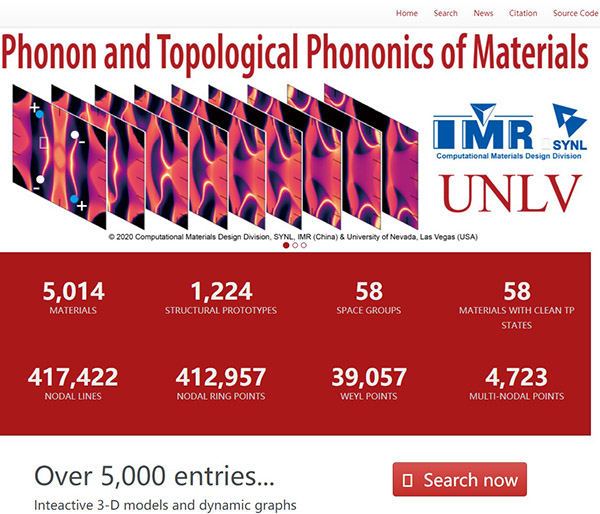SYNL scientists predict thousands of topological phononic materials through computation and data driven strategy
· Considering the current size of materials data, it is impossible to investigate each compound by trial-and-error experiments, which required labor-intensive efforts. The SYNL scientists developed home-made software HT-PHONON, seeking over 5000 topological materials out of 13,000 materials within the high-throughput computational materials design jointly with a big data analysis. Furthermore, they constructed an online database for topological phononic materials, now opening to public community throughwww.phonon.synl.ac.cn.
Phonon is the energy quantization of lattice vibrations in materials and is a kind of quasiparticle of collective excitations, that can be viewed as one of the basic particles in condensed matters. Of course, phonon heavily participates in fundamental properties of materials, such as thermal, optical, electric, and mechanical properties. Before 2017, the studies of these topological materials, mostly focused on electronic systems including topological insulators, topological semimetals and even topological superconductors, had attracted the frontier of condensed matters and materials science , however, the related studies of topological phonons of solid materials with periodic lattices were still blank at that time. In similar to other topological systems, topologically protected phonons also hold non-trivial phononic surface or edge states and, both energy and signals can be transported through specified vibrational modes related with topology, that are robust against both interferences and scatterings. With these channels of topological phonons, it is capable of the realization of low-dissipation transmission, resulting in promising novel properties and riche prospects of applications.
Shenyang National Laboratory for Materials Science (SYNL) scientists from the Computational Materials Design Division demonstrated more than 5,000 topological phononic materials (TPs) out of about 13,000 materials, using their home-made soft package, HT-PHONON, in combination of high-throughput computation and big data technologies. A series of TPs have been predicted, including topological single Weyl phonons, double Weyl phonons, high-degenerate Weyl phonons, topological nodal line and topological nodal ring phonons. Before these findings, only more than about 10 TPs were theoretically predicted in literature. On Feb. 22, this research was online published in Nature Communications (DOI: 10.1038/s41467-021-21293-2) titled "Computation and data driven discovery of topological phononic materials", and was also highlighted in its Editors’ Focus.
Unlike electrons, phonon does not obey Pauli's exclusion principle and also not have the limitation of the Fermi level. Theoretically, TPs are thus more common than topological electronic materials. However, it is an urgent and challenging task to efficiently describe topological phonon states of materials from tens of thousands of real crystalline materials. From the beginning, two main difficulties exist: First, to compute force constants of phonons was extremely time-consuming. No matter whether using the density functional perturbation theory or the finite displacement method, it’s always difficult to accurately calculate a large number of phononic force constants without any human intervention. Second, after constructing dynamic matrix from obtained force constants it’s another kind of difficulty to calculate the key invariant of phonon topology, that is a key to seek TPs and to classify them. It is well-known that phonons obey Bose-Einstein statistics without the limitation of the Fermi level and within the whole frequencies topological analysis thus cost times being several orders of magnitude higher than that of an electronic system which only needs to focus energy bands around the Fermi level.
To overcome those two crucial challenges, the SYNL researchers optimized the computations of topological invariants to achieve, both efficiently and conveniently, topological analysis, and developed the high-throughput software package HT-PHONON of topological phonon in combination with big data. This tool opens the door to seeking TPs that can interact to produce exotic phononic and topological properties by realizing the computations of phonon force constants, the analysis of topological invariants, the prediction of topological phonons and the description of categories as well as the topological nontrivial surface states, and finally classified them into the library within the high-throughput, fully automatic computational framework. Among about 13, 000 materials, they discovered many novel TPs, including 322 clean topological Weyl phonon materials, hourglass TPs, and multiple Weyl phonons through the big data analysis. The researchers further interpreted the occurrence of various types of TPs and elucidated their correlated relationship. In particular, they illustrated the key roles of time reversal symmetry or space inversion symmetry breaking, or the manipulations of nonsymmorphic space group (screw axis or glide mirrors) for the occurrence of those novel topological phonon states. For instance, several interesting cases were highlighted, such as nonsymmorphic symmetry protected hourglass TPs protected in TeO3, single Weyl TPs between acoustic and optical branches in half-Hesuler LiCaAs and zintle phase of ScZn, and the coexisted triple and quadruple Weyl phonons in noncentrosymmetric superconductor AuBe.
Besides these scientific progresses, the researchers have also realized the generalization, convenience and visualization of online topological phonon data, and constructed an online database of TPs, which contains 5,014 materials from this work. The website iswww.phonon.synl.ac.cn, can be inquired and used online. Of course, this work is still in progress. Due to the time-consuming calculations of material phonons, high-throughput calculations will still last 2-3 years and finally approach the amount of about 30,000 TPs. On the one hand, this database solves the difficulties in obtaining phonon force constants and, on the other hand, it provides a platform of a large number of ideal candidates for the research of TPs.
This research was mainly performed by SYNL scientists and also in partial collaborated with the University of Nevada, Las Vegas. Professor Chen Xing-Qiu at the SYNL and Dr. Zhu Qiang, an assistant professor at the University of Nevada, Las Vegas are the corresponding authors. PhD students Li Jiangxu, Liu Jiaxi, Liu Mingfeng, and Wang Lei from the SYNL, and Stanley A. Baronett from the UNLV jointly participated in this work. This work is supported by the National Natural Science Foundation of China and the Shenyang National Laboratory for Materials Science.

Fig1. The classification of topological phononic materials.

Fig2. The half-Huseler LiCaAs family hosts the topological single Weyl phonons between the acoustic and optical branches and their surface states.Fig3. The coexistence of triple and quadruple topological Weyl phonons in the unconventional superconducting AuBe and their extremely long topological phonon surface arcs.

Fig4. A new type of hourglass topological phonon state protected by a nonsymmorphic space group in TeO3. The hourglass phonons form a nodal net and produce a drumhead-like surface state.

Fig5. The website of topological phonon database,www.phonon.synl.ac.cn.